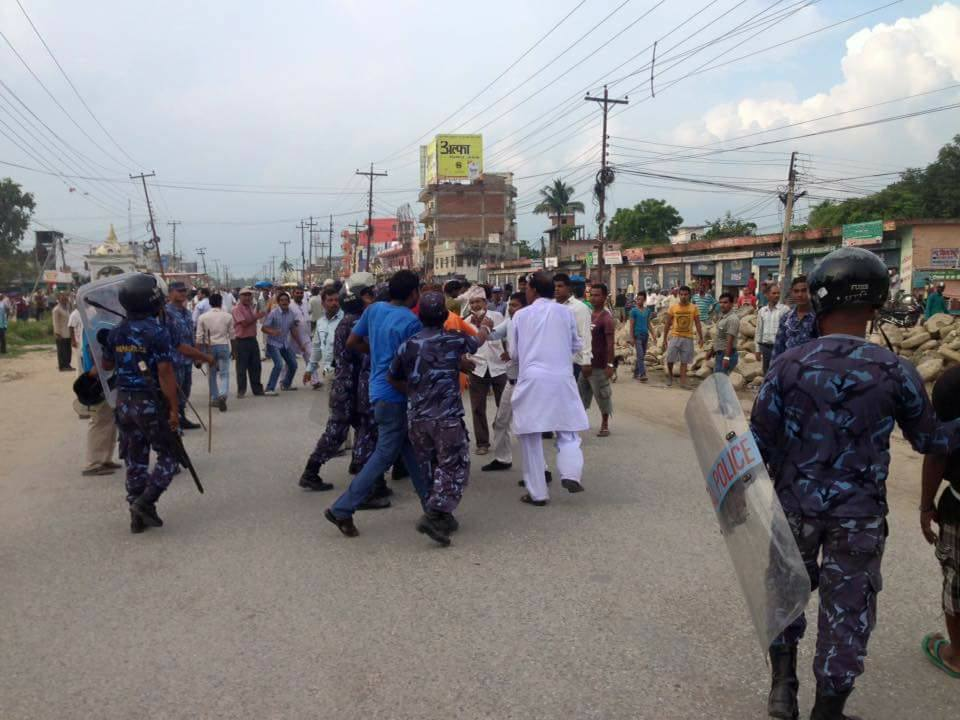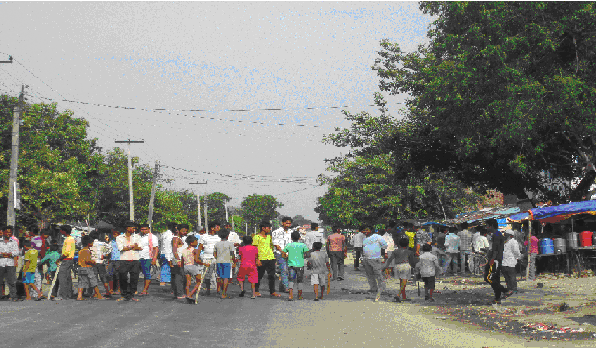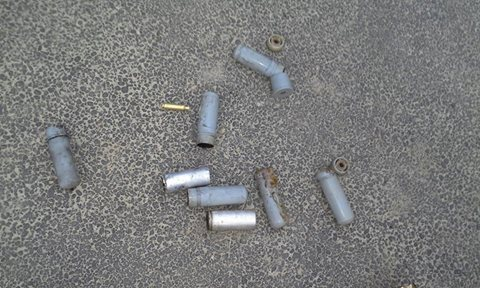The Asian Human Rights Commission (AHRC) condemns the continuing police violence in Nepal, which has escalated in recent weeks, following the proposed demarcation of Nepal into 6 states. Many ethnic and other groups have taken to the streets against the proposed demarcation. Due to constant strikes, people’s lives and livelihoods have been thrown into chaos. Hundreds of protesters have been injured in these violent confrontations with the police. Many have been shot and are receiving treatment.
 In the lead-up to a new constitution in Nepal, people have taken to the streets to get assurance that the State will reconsider the demarcation and ensure their rights are guaranteed under the new constitution. This has led to violent confrontations with the police in many places around Nepal. The police have failed to adopt modern crowd control methods and have instead resorted to charging peaceful protestors with batons, hitting them on their heads, and hurling bricks at them.
In the lead-up to a new constitution in Nepal, people have taken to the streets to get assurance that the State will reconsider the demarcation and ensure their rights are guaranteed under the new constitution. This has led to violent confrontations with the police in many places around Nepal. The police have failed to adopt modern crowd control methods and have instead resorted to charging peaceful protestors with batons, hitting them on their heads, and hurling bricks at them.
Three protesters were earlier killed in Surkhet District when the police opened fire. And, on August 18, the police in Saptari District killed 2 persons, one of whom included Rajiv Raut. There are four others in hospital with serious injuries following this confrontation. The AHRC has also received reports that the police have chased and shot 5 rounds at Naim Dhuniya in Kapilbastu District. His condition is reported to be serious.
The AHRC has also received information that 14-year-old Roshan Raidas, who went to watch the protest, has been shot in Kapilbastu District. And there are further reports of the police shooting bystanders. In districts like Nawalparasi and Rupandehi, police have charged at children and senior citizens with batons. Police have even beaten innocent children roaming around the protest areas, and entered houses and beaten innocent citizens not connected to the protests.
In many places, following brutal police crackdown, the protesters have regrouped, and proceeded to vandalize and burn down police outposts in anger. This happened in Bhardah after Rajiv’s death. And, it has happened in Kapilbastu District as well.
AHRC has also learned that groups of Pahades ‘hill origin people’, who are against these protests, have been trying to muzzle protesters by threatening them. They have been shouting racial slurs like “Madhesi Chor Desh Chod” (Madhesi thief leave the country). In Bhardah of Saptari District, the police have been using racial slurs like “Biharis, go back to India”.
 AHRC has also been aware that some protesters have used children in the demonstrations, for instance in Jumla and Kapilbastu District. It is an offence to put children in harms way in this fashion. Any groups and political parties using children must refrain from doing so, as it puts children in a vulnerable position, and is irresponsible behavior.
AHRC has also been aware that some protesters have used children in the demonstrations, for instance in Jumla and Kapilbastu District. It is an offence to put children in harms way in this fashion. Any groups and political parties using children must refrain from doing so, as it puts children in a vulnerable position, and is irresponsible behavior.
While some protestors have displayed childish behavior, in response to people’s protests, the Nepal police have shown their barbaric core. Instead of relying on modern measures of crowd control, the police have resorted to charging batons, pelting bricks, and shooting protesters. “We fired in the air” is an excuse for the Nepal Police that is belied by the result. If the police have been firing in the air, then perhaps the next claim would be that it is the people who jumped up to get themselves shot.
 Despite the increase in dissenting voices taking to the streets in protest, crushing these protests violently with batons, bullets, and tear-gas is unacceptable. The government of Nepal bears responsibility for the deaths caused by excessive police violence and for not addressing these protests in lawful ways. On the other hand, protesting groups and political parties must ensure peaceful and non-violent demonstrations, as befits behavior of citizens in a democracy.
Despite the increase in dissenting voices taking to the streets in protest, crushing these protests violently with batons, bullets, and tear-gas is unacceptable. The government of Nepal bears responsibility for the deaths caused by excessive police violence and for not addressing these protests in lawful ways. On the other hand, protesting groups and political parties must ensure peaceful and non-violent demonstrations, as befits behavior of citizens in a democracy.